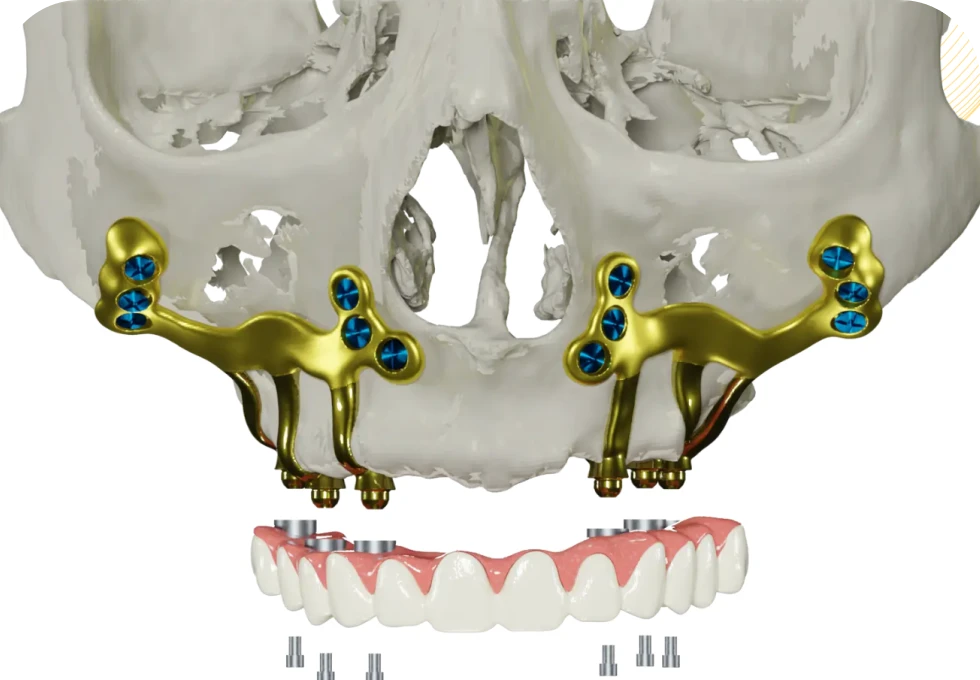Subperiosteal implants
Subperiosteal implants are a solution for patients with severe bone loss in the upper or lower jaw, making it impossible to place conventional dental implants. Unlike conventional implants, which are inserted directly into the bone, sub-periosteal implants rest on the bone beneath the gum like a framework. They are custom-designed to perfectly match the anatomy of the patient’s jaw.
Why opt for subperiosteal implants?
Subperiosteal implants are often recommended for patients who cannot benefit from bone grafting, as with zygomatic implants, or for those seeking a less invasive solution. This type of implant is ideal in cases where bone loss is too great to place conventional implants without additional interventions such as bone augmentation.

Who can benefit from this type of implant?
Subperiosteal implants are particularly suitable for patients who have suffered significant bone loss, making it difficult to place conventional implants. They are also suitable for patients who prefer to avoid bone augmentation surgery or who require a quicker, less invasive solution.
The advantages of subperiosteal implants
- No bone grafting required: in most cases, sub-periosteal implants avoid the need for bone grafting surgery.
- Immediate stability: Because the implant rests directly on the bone beneath the gum, it provides immediate stability for the dental prosthesis that will be attached.
- Custom fit: These implants are specifically manufactured to fit the unique shape of the patient’s jawbone, guaranteeing a perfect fit.
- Fast solution: Treatment with sub-periosteal implants can be faster than solutions that require prior bone augmentation.
How does the procedure work?
- Initial consultation: Dr. Arnaud performs a complete check-up, including imaging studies, to determine whether the patient is a good candidate for this type of implant.
- Customized design: Based on the images obtained (CT scan or tomography), a precise model of the jaw is created. This model serves as a guide for the laboratory to fabricate the sub-periosteal implant and prosthesis.
- Implant placement: During surgery, the implant is inserted below the gum line, positioning it directly on the jawbone.
- Fixation of the prosthesis: On the same day, the prosthesis is fixed to the sub-periosteal implant, so that the patient can return home with fixed teeth.
Post-op care and follow-up
As with all dental implants, regular follow-up care is essential to ensure the longevity of the restoration. Rigorous oral hygiene and regular check-ups with Dr. Arnaud will help maintain the health of the gums and bone around the implants.
Subperiosteal implants offer a reliable alternative for patients with severe bone loss. They restore optimal dental function and esthetics without the need for bone grafting. Thanks to their customized design, they offer a durable and comfortable solution for patients seeking a solution tailored to their clinical situation.